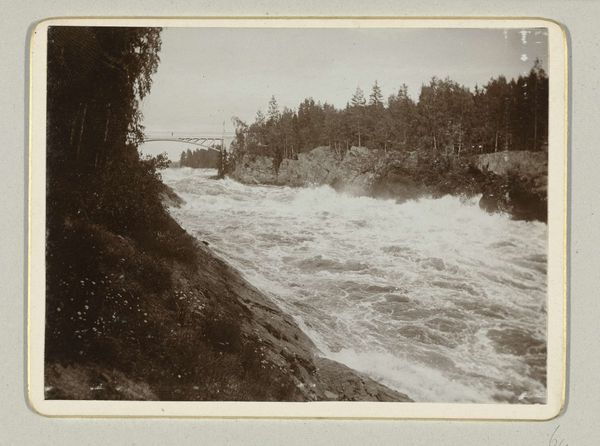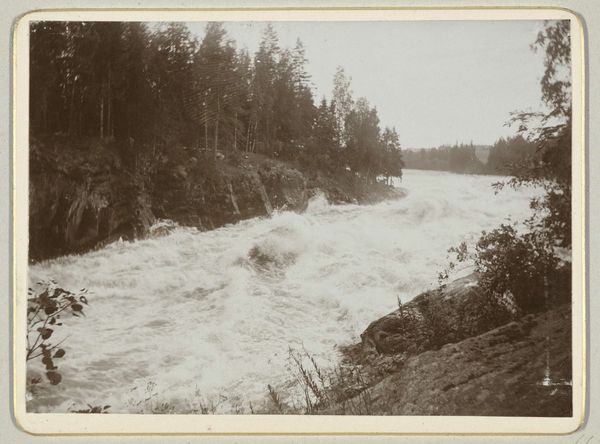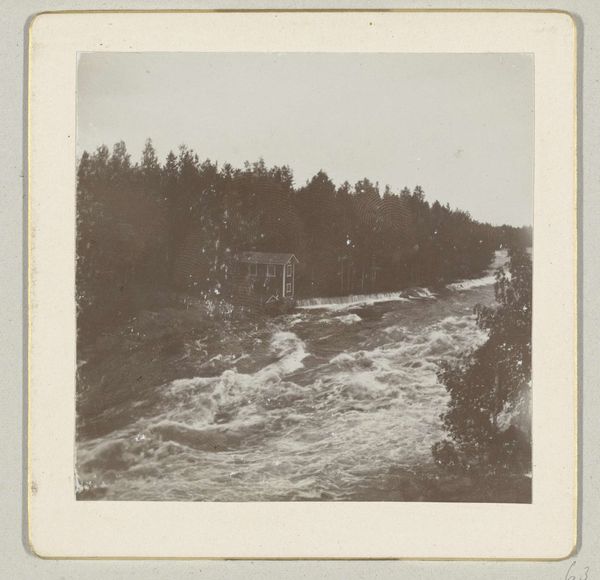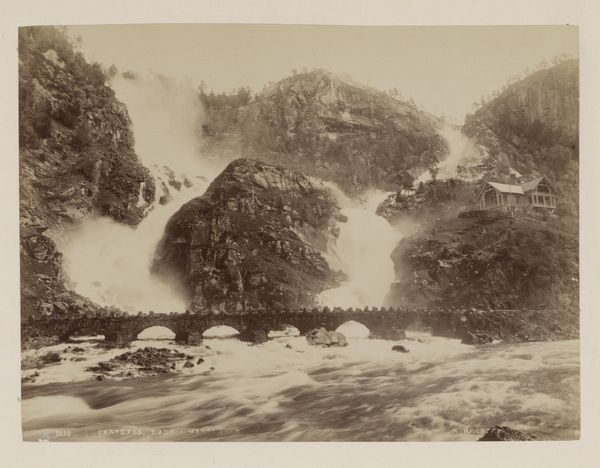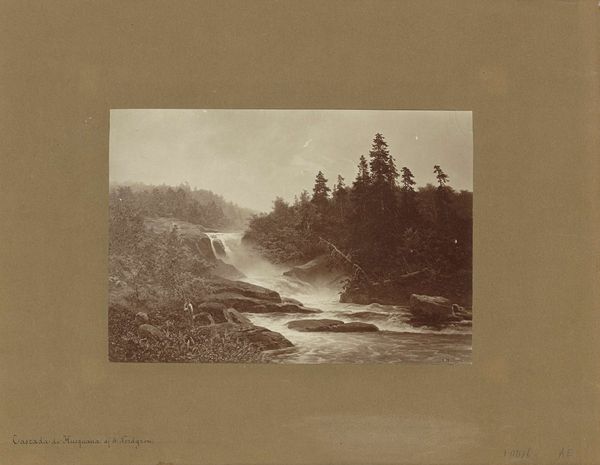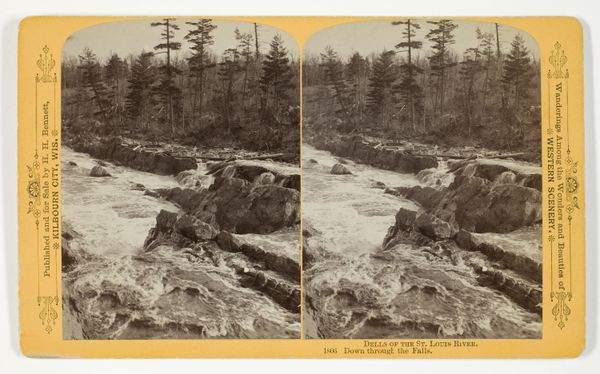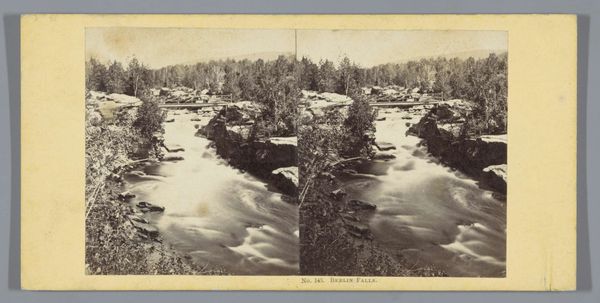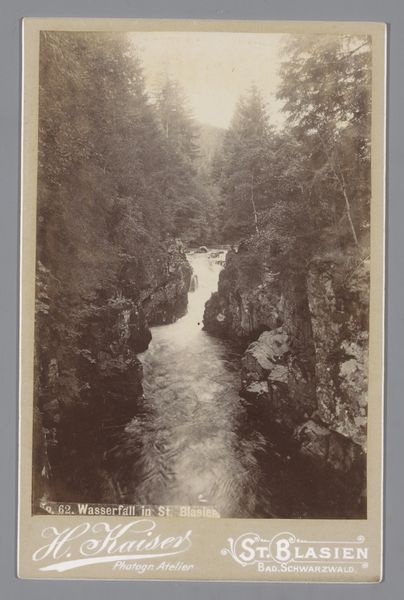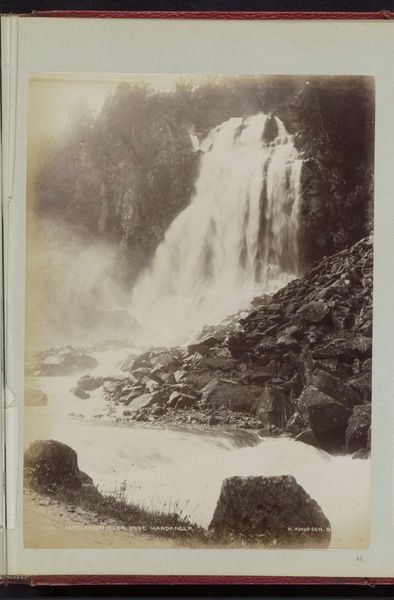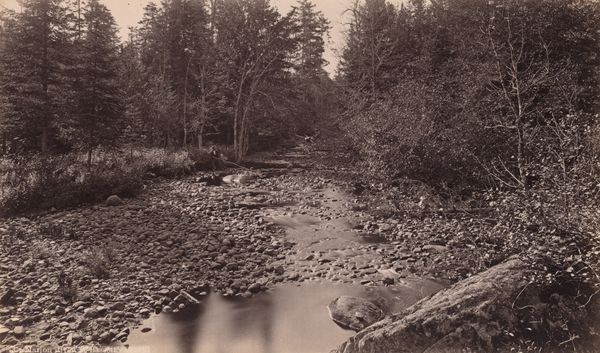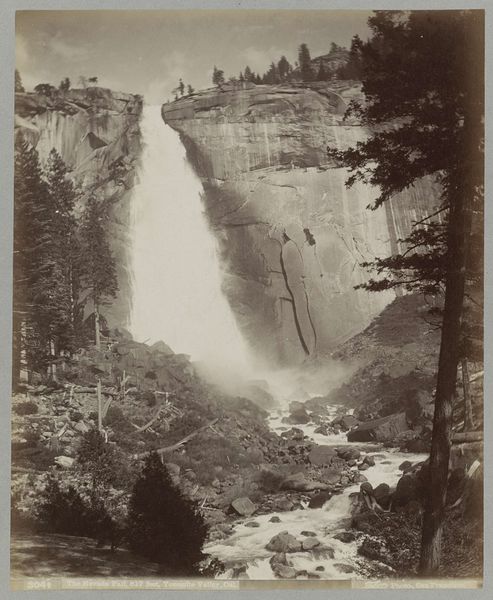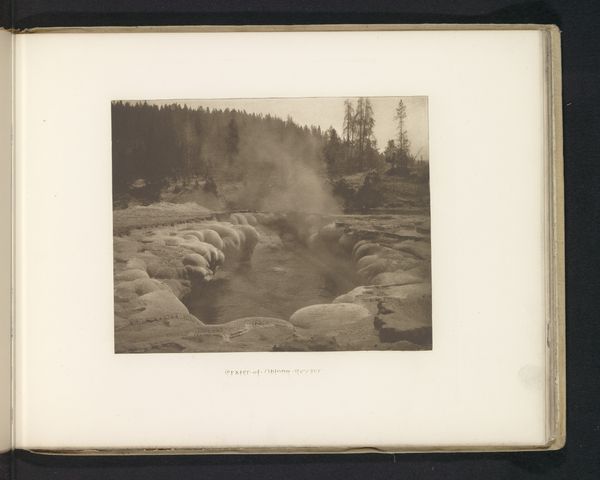
Dimensions: height 82 mm, width 120 mm, height 259 mm, width 365 mm
Copyright: Rijks Museum: Open Domain
Curator: What a roiling scene! The composition seems almost unstable, doesn't it? Editor: Indeed. What you're seeing is titled "Stroomversnelling van Imatra in Finland," or "Rapids at Imatra in Finland" by Henry Pauw van Wieldrecht. It’s a photograph dating to 1897. Curator: Photography as fine art… Interesting. Look at how the artist has captured the movement of the water; it almost feels painterly. Do we know anything about the printing process? The textures feel very deliberate. Editor: It's precisely the "painterly" quality that aligned it with Pictorialism, seeking acceptance as fine art at the time. It was all about manipulating the photographic medium to resemble painting and etching, blurring the lines between different artistic disciplines. It elevates the act of printing to align itself with craft, labor and social perceptions of photography at the end of the nineteenth century. Curator: So, how did this "art photography" challenge conventional art world structures? I'm fascinated by the implied artistic hierarchy there, you know, where painting holds a perceived superiority. Editor: Good question! It actively worked to build its own institutional structures. Think camera clubs, photography-only salons, dedicated journals – spaces to cultivate its aesthetic theories, which also acted as an indirect challenge to Royal Academies and state-sponsored exhibitions which were considered dominant for representing visual culture at the time. It even attempted to gain respect from them through different strategies to include photography, further establishing new taste canons. Curator: The scene itself— these rapids— what did they mean to audiences at the time? Was this a particularly celebrated location? Editor: Definitely. The Imatra Rapids were a popular tourist destination in Finland even before this image was made. It even functioned almost like a "natural spectacle". Photography like this played a crucial role in promoting these sites, reinforcing ideas of sublime nature, and feeding into tourism, all while negotiating the social and aesthetic standards of the art world at the time. Curator: Fascinating. A crafted image of seemingly untamed nature, feeding both art and tourism. I'll definitely look at it differently now. Editor: And hopefully so will others. Thinking about how we perceive photographic images today as instant reflections of reality it is an important reminder that that was not always the case, that images have institutional implications in a market-driven environment.
Comments
No comments
Be the first to comment and join the conversation on the ultimate creative platform.
